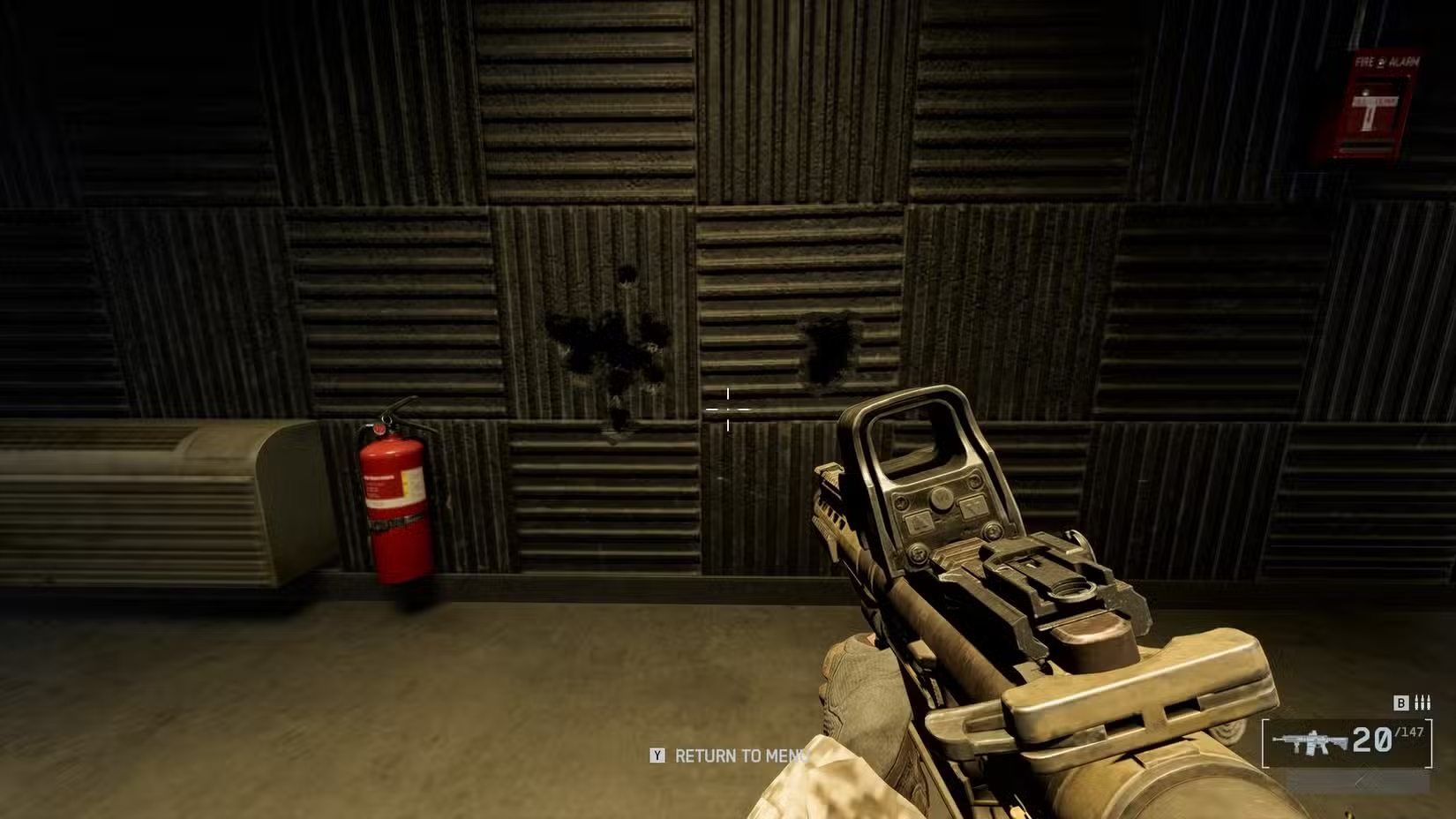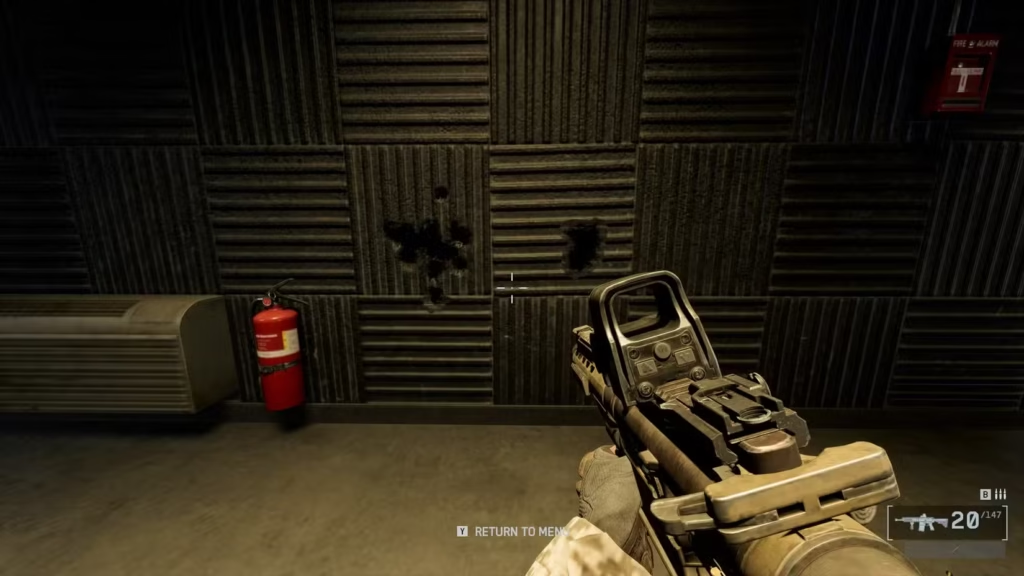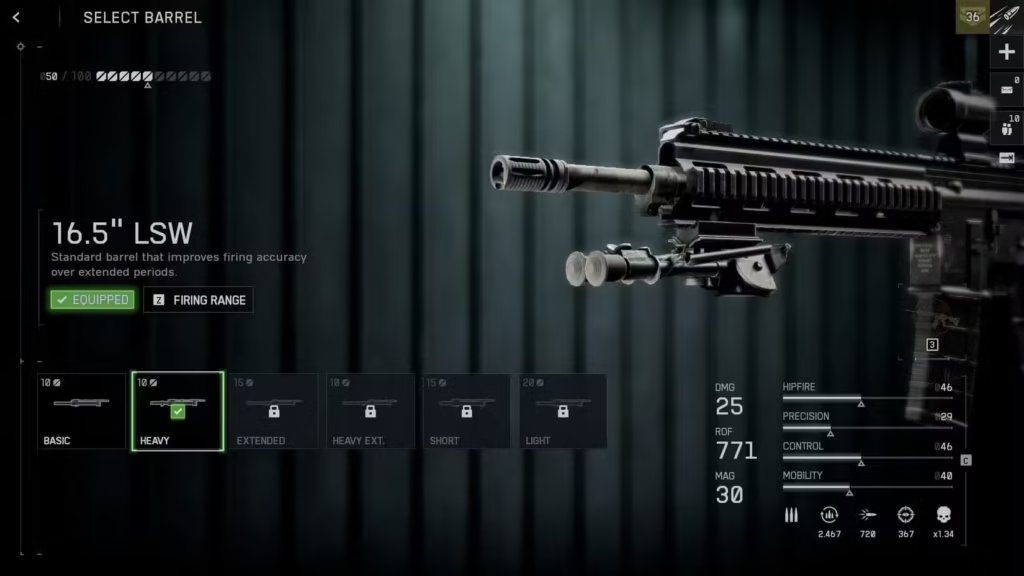
Newsletter Subscribe
Enter your email address below and subscribe to our newsletter

Enter your email address below and subscribe to our newsletter
Your Source for Game News and Guides

Understand weapon bloom in Battlefield 6 with our complete guide. Learn how accuracy spread works, which attachments help or hurt, and tactics to control bloom for better gunplay.
You’re lined up perfectly on an enemy 50 meters away. Crosshair centered on their chest. You hold down the trigger and… half your bullets seem to magically miss despite your perfect aim. Welcome to weapon bloom, one of Battlefield’s most misunderstood (and controversial) mechanics.
Bloom has been part of the Battlefield DNA since Battlefield 3, and it’s back in full force in Battlefield 6. Whether you grabbed it on Steam, PlayStation, or Epic Games Store, understanding bloom is crucial to improving your gunplay.
Some players love it as a balancing mechanic. Others hate it with a burning passion. But love it or hate it, bloom affects every single weapon in the game, and knowing how it works will dramatically improve your performance. Let’s break down exactly what bloom is, how it impacts your shots, and most importantly—how to minimize its effects.

Bloom (also called accuracy spread) is a mechanic where your weapon’s accuracy degrades the longer you fire continuously. Think of it as your gun getting progressively “looser” and less precise as you hold down the trigger.
Here’s the critical part that trips up new players: Bloom affects your shots even when you’re aiming down sights (ADS).
In many shooters, if your crosshair is on the enemy and you’re ADS, bullets go exactly where you’re aiming. Not in Battlefield 6. Your bullets can—and will—deviate from your aiming point due to bloom, even if your recoil control is perfect.
When you mag-dump at a target, watch your bullet tracers carefully. You’ll notice they don’t all fly straight toward your reticle—they spread out in a cone pattern around it. The longer you hold the trigger, the wider that cone becomes. That’s bloom in action.
Real-world example: Take the M417 Carbine and fire it at a wall from 5 meters away:
The difference is dramatic. Same distance, same aim point, but radically different accuracy. That’s purely bloom at work.
Bloom accumulates based on several factors:
Every consecutive shot fired increases your weapon’s bloom value. The first few bullets from almost any gun are highly accurate. By the 10th consecutive shot? Your accuracy has degraded significantly.
Different weapons accumulate bloom at different rates:
Moving while shooting adds significant bloom. The faster you’re moving, the worse your accuracy becomes:
This is why you see experienced players stop moving momentarily before taking shots at medium-long range. That brief pause dramatically improves accuracy.
Your position affects base bloom:
Going prone isn’t just about making yourself a smaller target—it genuinely improves your accuracy. This is especially important for support class players laying down suppressive fire.
Hip-firing has massively increased bloom compared to ADS. This is expected and by design—hip-fire is meant for panic situations and extreme close quarters, not precision shooting.
However, and this is crucial: ADS doesn’t eliminate bloom, it just reduces it. You’ll still experience bloom degradation while aiming down sights, which is what frustrates many players.
Different weapon categories have different base bloom values and accumulation rates:
Low Bloom Weapons:
Moderate Bloom Weapons:
High Bloom Weapons:
Understanding your weapon’s bloom characteristics helps you know when to burst fire vs when full-auto is viable.

This is where bloom becomes most apparent—and most frustrating if you don’t understand it:
Bloom impact: Minimal to Negligible
At close range, bloom barely matters. Even with significant bloom accumulation, the cone of fire is small enough that bullets still hit human-sized targets. This is why full-auto spraying is viable in CQB—bloom exists but doesn’t prevent hits.
Weapons like the PW5A3 SMG and high-ROF assault rifles dominate here because bloom doesn’t punish them at these distances.
Bloom impact: Moderate to High
This is where bloom starts becoming a problem. Full-auto fire at 40 meters means many of your bullets will miss despite good aim. Your crosshair might be perfectly placed, but bloom causes bullets to deviate.
Solution: Burst fire. 3-5 round bursts at this range dramatically improve hit percentage. The NVO-228E and similar rifles excel here because they’re naturally accurate with controlled bursts.
Bloom impact: Extreme
Full-auto at this range is almost useless due to bloom. Even with perfect recoil control, your bullets spray wildly. This is why assault rifles struggle against DMRs and snipers at distance—not just damage falloff, but bloom makes sustained fire ineffective.
Solution: Single shots or very short (2-3 round) bursts. Let bloom reset between shots. Check our best tips and tricks guide for more long-range tactics.
Wait, do sniper rifles have bloom? Yes, but it works differently.
Bolt-action sniper rifles don’t experience bloom accumulation the same way automatics do because you can’t hold the trigger. However, they do have:
Movement bloom: Moving while scoped significantly reduces accuracy Quickscope bloom: Firing immediately after scoping has bloom Jump/slide bloom: Airborne shots are extremely inaccurate
This is why you see skilled Recon players always stop moving before taking their shot, even with bolt-actions. That momentary pause lets bloom reset to its minimum value.
For aggressive sniping and sniper spot guides, understanding bloom mechanics is crucial.
Now for the practical part—how do you deal with this mechanic?
This is the single most effective bloom management technique. Instead of holding the trigger, fire in controlled bursts:
Close range (0-15m): Full auto acceptable Medium range (15-40m): 5-8 round bursts Long range (40-75m): 3-5 round bursts Extreme range (75m+): Single shots or 2-round bursts
The pause between bursts lets bloom reset significantly, maintaining accuracy. Practice this until it’s muscle memory.
At medium-long range, stop moving momentarily before firing. Even a brief 0.2-second pause dramatically reduces bloom.
Advanced technique: Strafe, stop, shoot burst, strafe, stop, shoot. This makes you harder to hit while maintaining accuracy. It’s a staple of high-level play.
Going prone isn’t camping—it’s using game mechanics properly. Support players with LMGs should be prone when defending or providing suppression.
This is huge and often overlooked. Attachments affect bloom in several ways:
Attachments That Help:
Alloy Vertical Grip
Ribbed Stubby Grip
Heavy Barrels / LSW Barrels
Single-Port Brake / Compensators
Attachments That Hurt:
Most Underbarrel Grips Many foregrips trade accuracy for recoil control:
Classic Vertical Grip
Low-Profile Stubby Grip
Canted Stubby Grip
Pro tip: Read attachment descriptions carefully. If it says “reduces ADS accuracy” or “reduces accuracy while moving,” you’re adding bloom.
Different weapons require different bloom management:
High ROF Weapons (Kord, M4A1):
Precision Rifles (NVO-228E, M433):
LMGs with Special Barrels:
SMGs:
Check out our complete weapons list guide to understand each weapon’s bloom characteristics.
Let’s clear up some myths floating around the Battlefield community:
Myth 1: “Bloom is just RNG and ruins the game” Truth: Bloom is predictable and manageable. It rewards burst fire, positioning, and trigger discipline. Yes, individual bullets have spread, but skilled players consistently land more shots because they work with the mechanic, not against it.
Myth 2: “If I control recoil perfectly, my bullets go where I aim” Truth: Recoil and bloom are separate mechanics. You can have perfect recoil control and still miss due to bloom. Both must be managed.
Myth 3: “Laser sights reduce bloom” Truth: Laser sights only affect hip-fire spread, not ADS bloom. They won’t help with the bloom issues people complain about.
Myth 4: “Going prone removes bloom completely” Truth: Prone reduces base bloom and bloom accumulation, but doesn’t eliminate it. You still need burst fire at long range.
Myth 5: “Sniper rifles don’t have bloom” Truth: They do, just applied differently. Movement and quickscoping have significant bloom penalties.
Bloom’s impact varies across game modes:
Conquest (Large Maps):
Breakthrough (Linear Combat):
Close Quarters Modes:
Your settings can help manage bloom’s effects:
Visual Settings:
Control Settings:
Check our complete settings optimization guide for detailed configuration.
Understanding bloom helps with specific challenges:
Accuracy Challenges:
You might be wondering: why have bloom at all?
Game Balance Reasons:
Community opinions are split:
Love it or hate it, bloom is here to stay—so you might as well learn to work with it.
Want to actually improve your bloom control? Try these exercises:
1. Wall Shooting Drill:
2. Moving vs Stationary Drill:
3. Range Testing:
4. Real Combat Practice:
Set up custom Portal matches specifically for bloom practice—it’s time well spent.
Weapon bloom is one of those mechanics that separates average Battlefield players from great ones. It’s not flashy, it’s not exciting, but understanding and managing it will improve your K/D and overall effectiveness more than almost any other single skill.
The core principles:
Yes, bloom can be frustrating when you “should have” gotten a kill. But it’s a predictable, manageable mechanic. Players who adapt their playstyle to work with bloom consistently outperform those who fight against it.
Stop mag-dumping. Start burst firing. Watch your accuracy—and your K/D—improve dramatically.
Grab Battlefield 6 and put these principles into practice. Your trigger finger will thank you.
Want to master more game mechanics? Check out our guides on recoil control techniques, weapon loadouts, class optimization, and advanced tactics to dominate every match. Join the discussion on Reddit to share your bloom management tips!